Surviving a Heatwave: 10 Tips for Gardening in High Heat
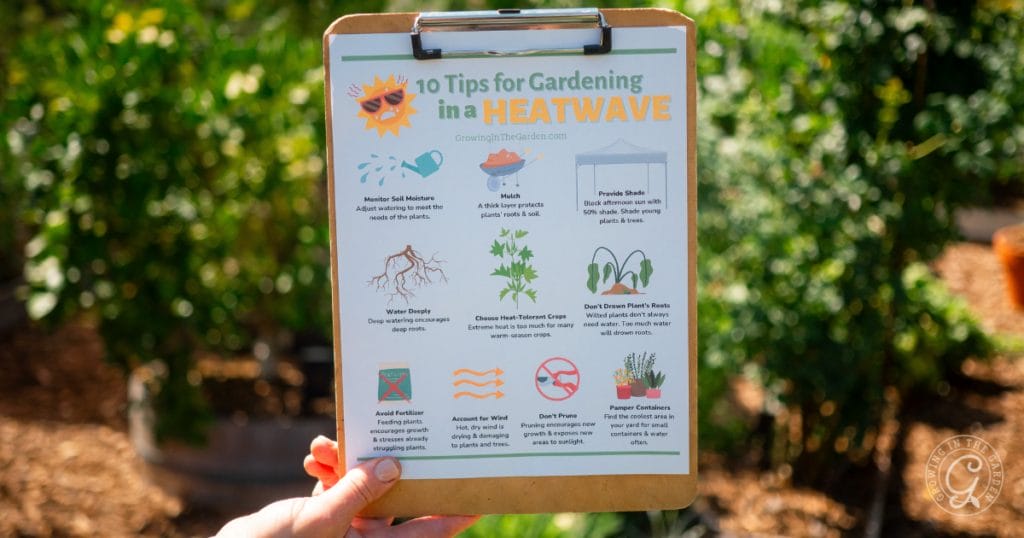
When the forecast calls for excessive heat, don’t panic! Instead, read through these tips for gardening in a heatwave and note what you need to do to get the garden ready. With careful planning and adjustments to your gardening routine, you can witness the resilience of your plants, even in temperatures over 110°F (43°C).
The best time to prepare for a heatwave is long before the heat arrives. Proper plant selection, good soil, and correct watering practices are the best ways to ensure your garden survives. But all is not lost if you find yourself unprepared. Use these tips to get your garden into heatwave survival mode.
Article Outline:
- Monitor soil moisture levels
- Mulch deeply
- Provide shade
- Water deeply and infrequently
- Choose heat-tolerant crops
- Don’t drown roots
- Avoid fertilizer during high temperatures
- Account for wind
- Delay pruning during a heatwave
- Pamper containers
- The heatwave post-mortem
- Additional high-heat gardening resources
10 Tips for Gardening During a Heatwave
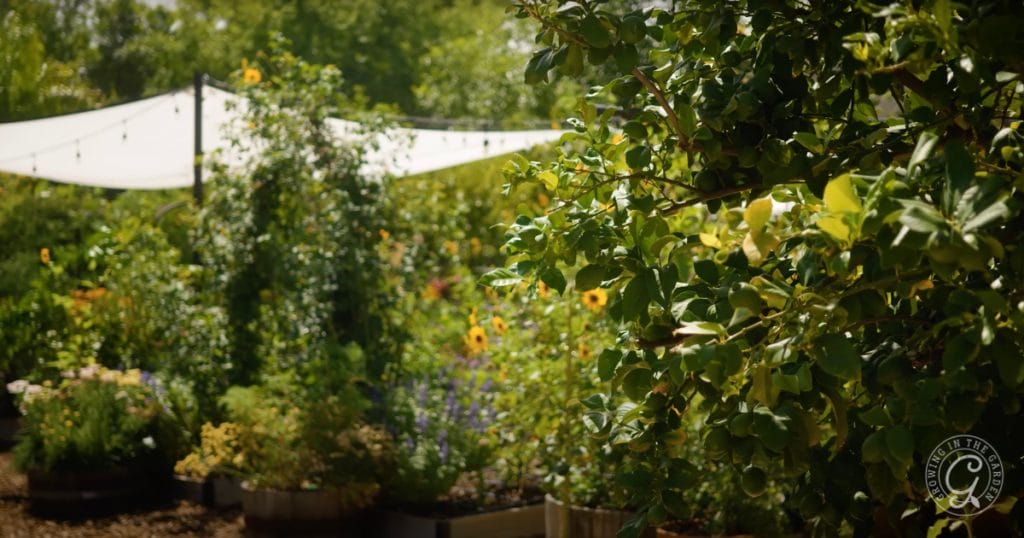
1. Monitor soil moisture levels
One of the most important tips for gardening in a heatwave is to closely monitor soil moisture levels and adjust your watering schedule to prevent water stress.
If the top couple of inches of soil are hydrated, there is no need for water. If the top inch or two is dry, water your plants early in the day to ensure that your plants have enough moisture to withstand the scorching temperatures later in the day. Learn more watering principles in this blog post.
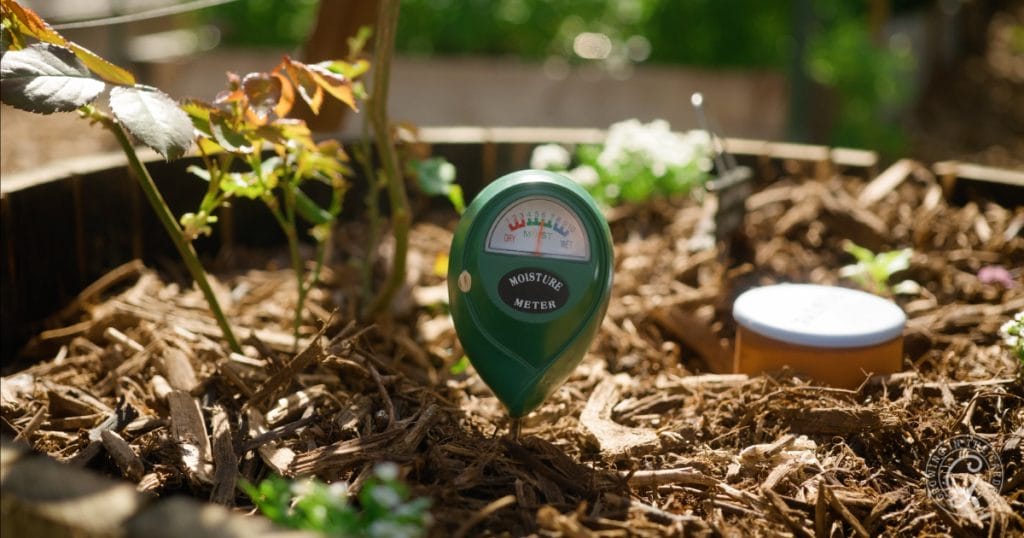
A moisture meter, a tool that measures the moisture content of the soil, can help you determine when to water your plants without overwatering or underwatering them.
2. Mulch deeply
Another critical strategy for gardening in extreme heat is applying a thick layer of mulch (3-4″ / 7-10 cm) around your plants. Mulch helps retain soil moisture, keeping the roots cool and preventing them from drying out too quickly under the intense sun. Learn more about mulch in this article.
If you would like to learn more about the principles of successful desert gardening, my guide, “Desert Gardening: How to Grow Vegetables in a Hot, Dry Climate,” may be helpful.

3. Provide shade
Focus on shading newly planted trees, landscape plants, and areas of your garden that receive afternoon sun. In sweltering heat, direct sunlight can cause wilting, sunburn, and even death in some plants. The shaded area can be as much as 10℉ (6°C) cooler than areas without shade.
During a heatwave, you may need to erect temporary shade structures, such as a canopy or shade cloth, to protect plants. It doesn’t have to be fancy, but additional shade may help plants survive. This article has ideas for adding shade to your garden.

4. Water deeply and infrequently
Focusing on deep watering rather than frequent shallow watering is essential during a heatwave. Deep watering means applying water slowly and deeply to the soil, allowing it to penetrate the root zone and beyond. Deep watering encourages deep root growth, making plants more resilient to drought conditions.
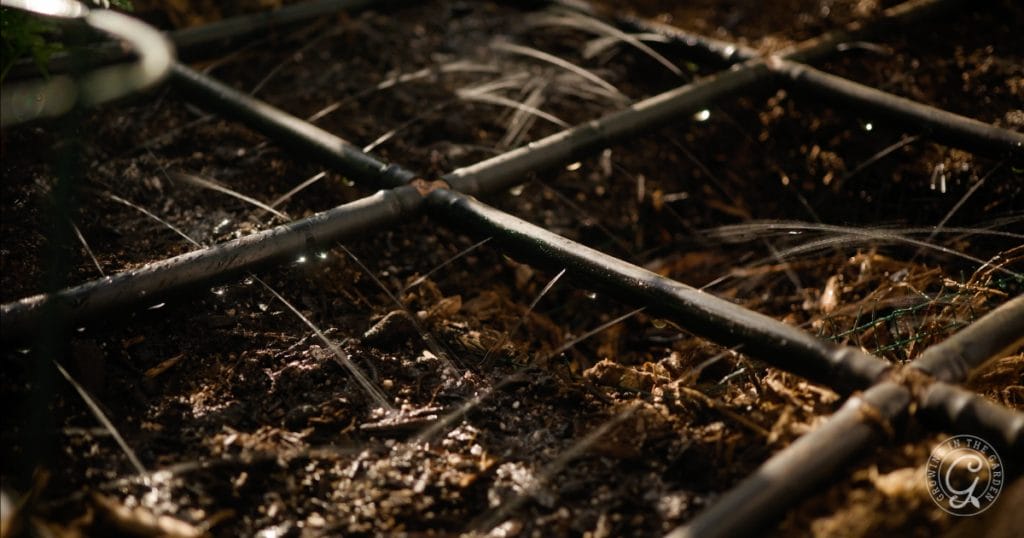
5. Choose heat-tolerant crops
An extreme heatwave separates warm-loving crops from heat-loving crops. Typical warm-season crops like squash, tomatoes, cucumbers, and green beans struggle during high heat. If the heatwave is temporary, these guidelines may help the warm-season crops survive until temperatures moderate.
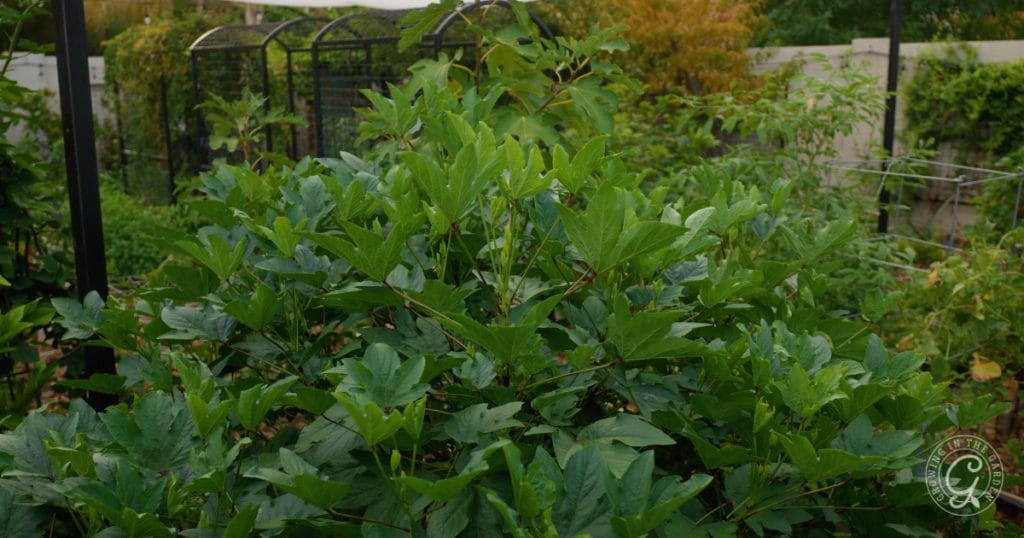
However, if your area receives prolonged high heat in the summer, warm-season crops will die off during the hottest months. Opting for varieties more adapted to extreme heat conditions in those areas is essential. These plants are better equipped to handle high temperatures and are more likely to survive a heatwave.
Heat-loving crops include okra, amaranth, sesame, basil, cowpeas, roselle hibiscus, and sweet potatoes. Learn more about these heat-loving crops in this blog post.
6. Don’t drown roots
Roots absorb water from the soil and breathe it out through their leaves in a process called transpiration. Wilted plants often can’t “breathe” fast enough to compensate for hot, dry conditions. Understanding this process can help you differentiate between water stress and heat stress in your plants.
A plant that wilts during the heat of the day and then recovers is suffering from heat stress, not water stress.
Check the soil before watering wilted plants. If there is moisture in the soil, do not water. Adding extra water can stress struggling plants and drown the roots, causing rot.
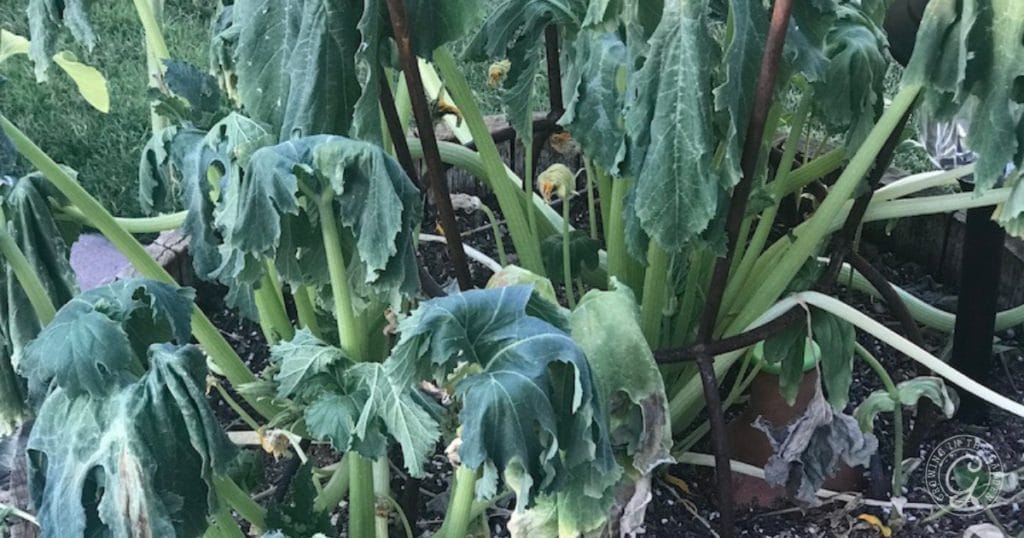
7. Avoid fertilizer during high temperatures
During a heatwave, it’s best to eliminate the use of fertilizers, as they can stress plants further by encouraging growth. Instead, allow plants to focus on survival rather than new growth.
8. Account for wind
During the summer, hot dry wind can take a toll on your plants.
- Ensure your young trees have support and any shade structures or trellises are adequately secured.
- Windy air also increases moisture loss in plants. After a windstorm, give your plants a big drink to replenish the lost moisture.
9. Delay pruning during a heatwave
Do not prune during extreme heat. Pruning is our way of directing a plant to grow, but the focus should be survival. Removing foliage also limits the plant’s ability to photosynthesize effectively and may expose new areas to harsh sunlight.
10. Pamper containers
Living in a container is stressful for plants. Containers heat up and dry out more quickly, especially during a heatwave. Move containers to the coolest areas of your yard or a protected area. Containers may need watering every day or even twice a day. Monitor the moisture levels.
Consider adding ollas to containers to provide a moisture reserve from which the roots can draw. I use the ollas from Growoya. (Use code Growing for a discount).
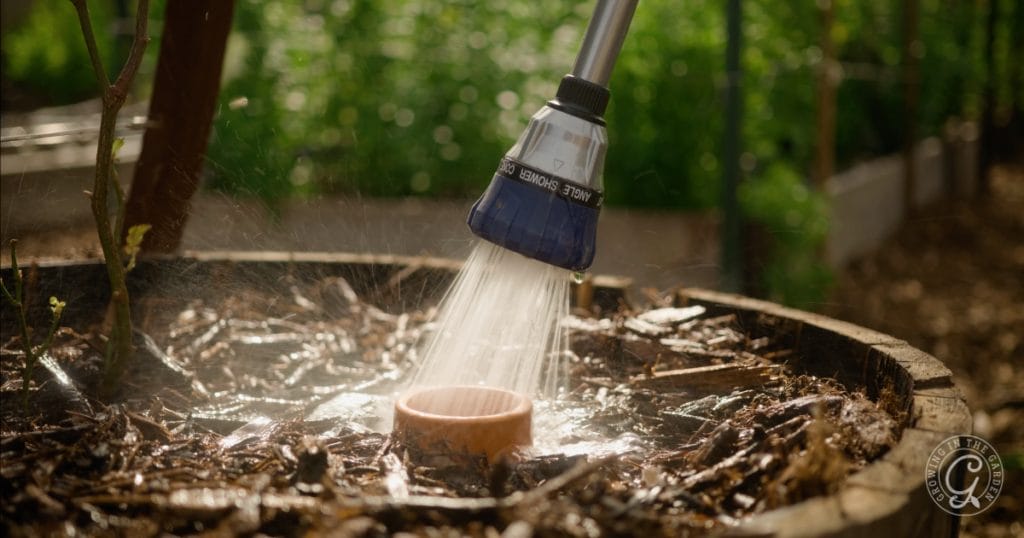
The heatwave post-mortem
Although it may feel like they do, heatwaves don’t last forever. When the high heat is over, evaluate how your plants handled the extreme heat.
- Which plants did well, and which ones struggled?
- Which parts of your yard or garden had an incredibly challenging time?
Use this information to make informed choices about plant selection and placement in the future.
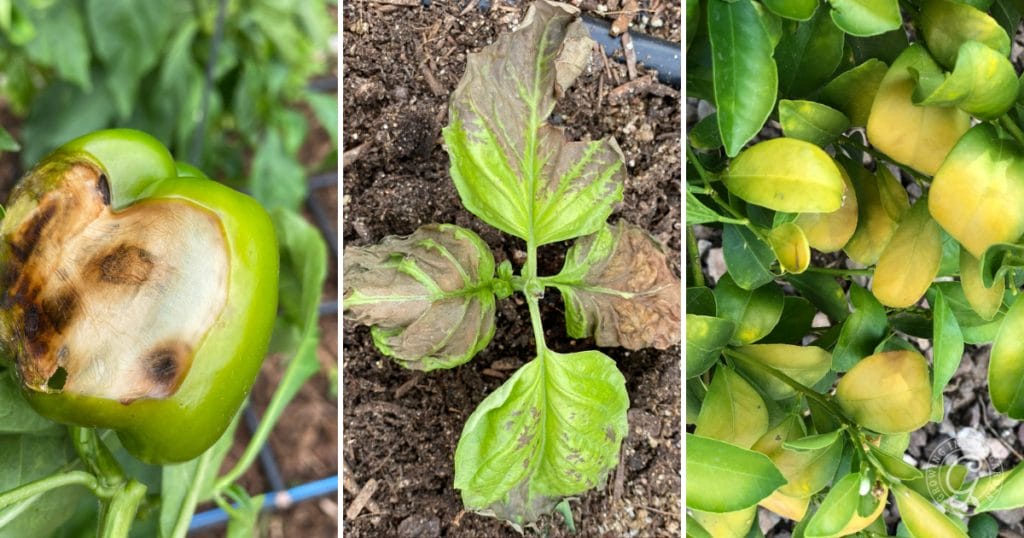
Additional high-heat gardening resources:
- 10 Ways to Help Your Garden Survive Summer
- Adding Shade Cloth to a Hot Summer Garden
- 10 Ways to Prepare Your Hot-Climate Garden for Summer
- 10 Flowers that Love Hot Summers – and How to Grow Them
- Summer Gardening in Arizona
- Summer Gardening in a Hot Climate (Playlist on YouTube)

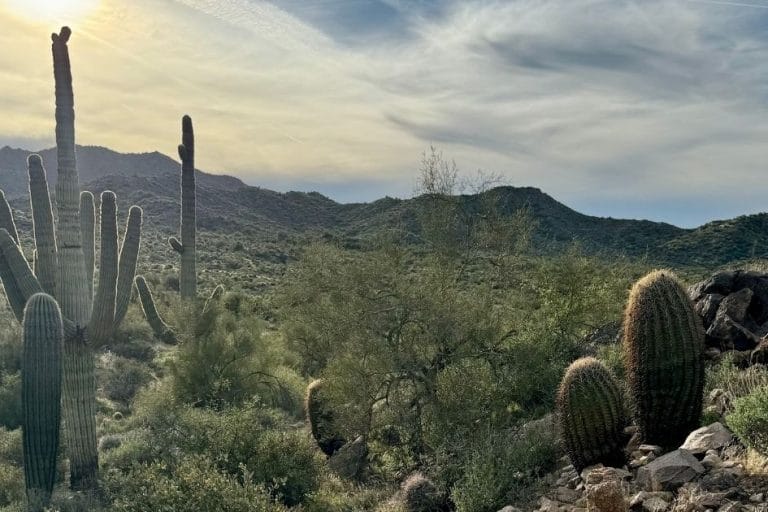
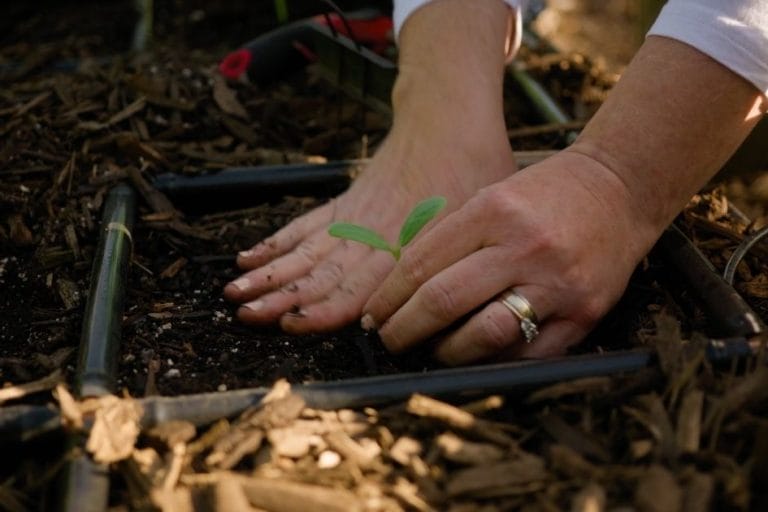


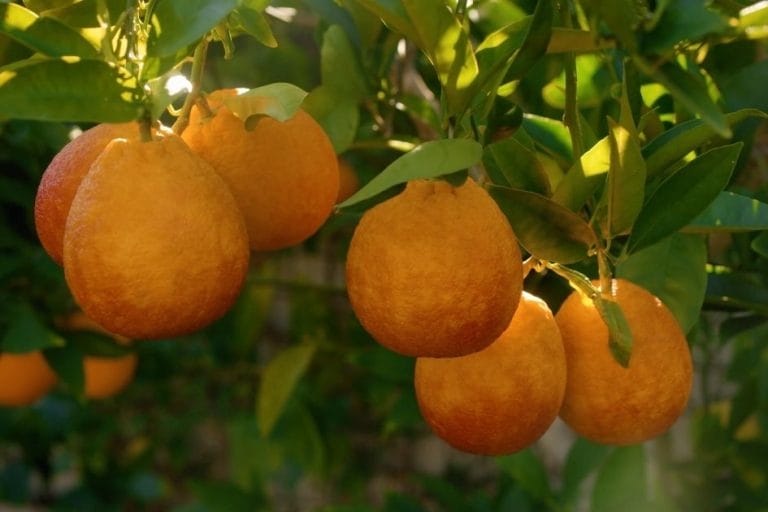
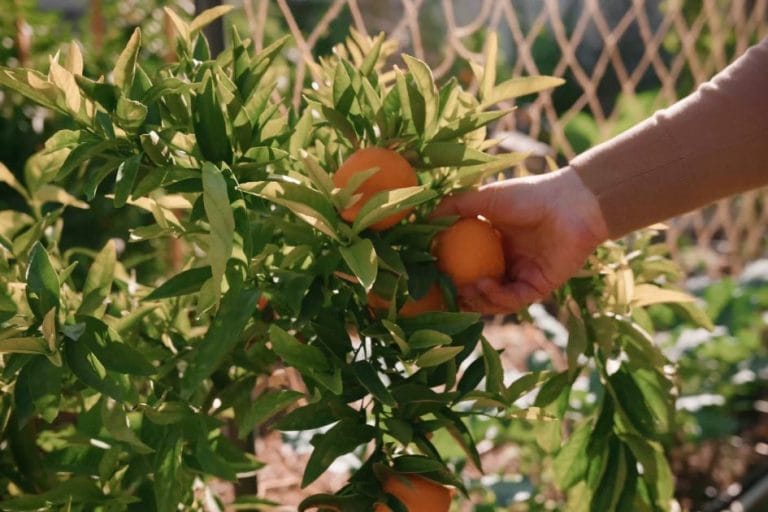
Here in southern New Mexico we are currently experiencing a heat wave. 104 yesterday, 6/05. 106 predicted today, 6/6.. Forecast says it will go back into the upper 90’s by Monday, 6/10. My question is WHEN can I fertilize tomatoes and peppers in CONTAINERS? Is upper 90’s considered “over the heat wave”? Last summer we had 100 plus temperatures every day from the third week of June until the first part of August when it cooled down to upper 90’s, but we still had 100 plus temperatures several days of August going into the second week of September.
One suggestion given me was try fertilizing at night when the temperatures will be cooler for a while. (Our night temperatures have been in 60’s and probably will occasionally be in the 70’s during the summer.) Another suggestion given me was just use half strength fertilizer.
I use organic Neptune’s Harvest Tomato & Veg 2-4-2. I also put organic granular fertilizer in the potting mix when I transplanted. Is using the granular counted as “not fertilizing”?
I suppose the bottom line is if I wait until the temperatures drop into the lower 90’s or so I probably won’t be fertilizing until September. This has been confusing for me.
Thank you,
Sharon White
Good questions. The NPK numbers on that fertilizer are very, they are less likely to burn that way. I would use a half-dose as needed.